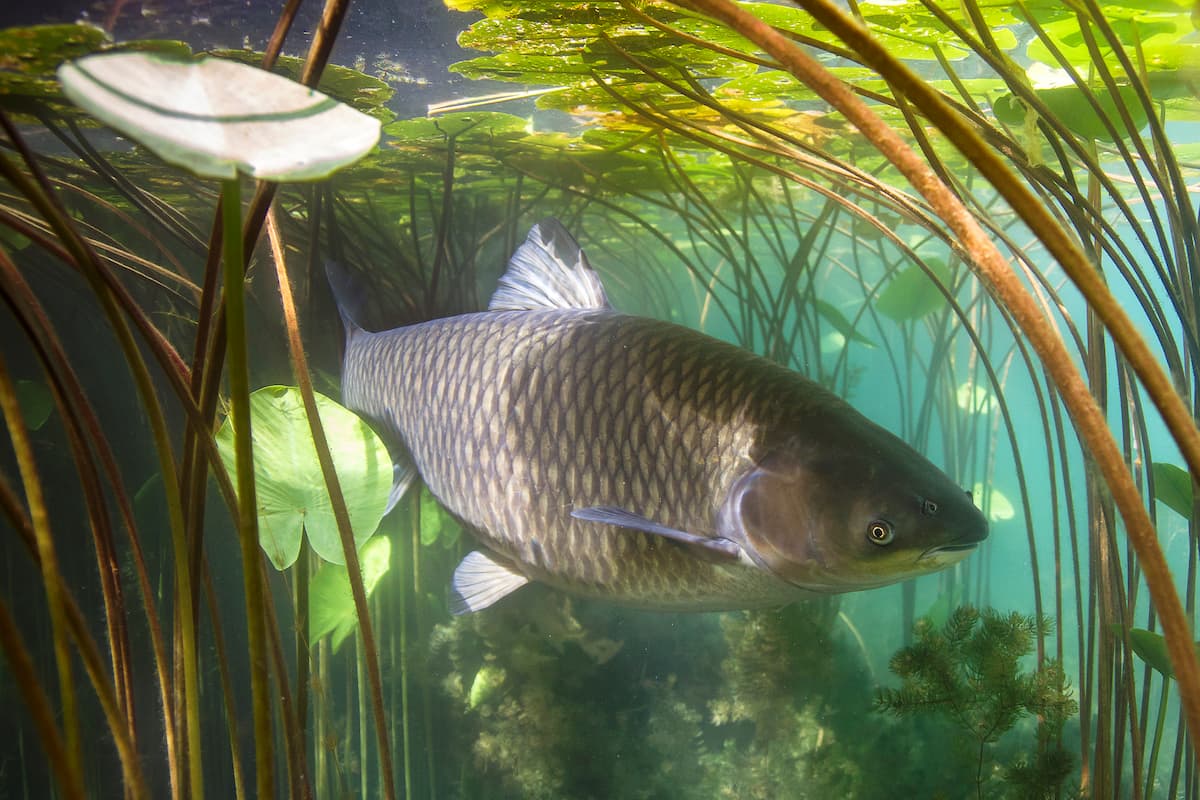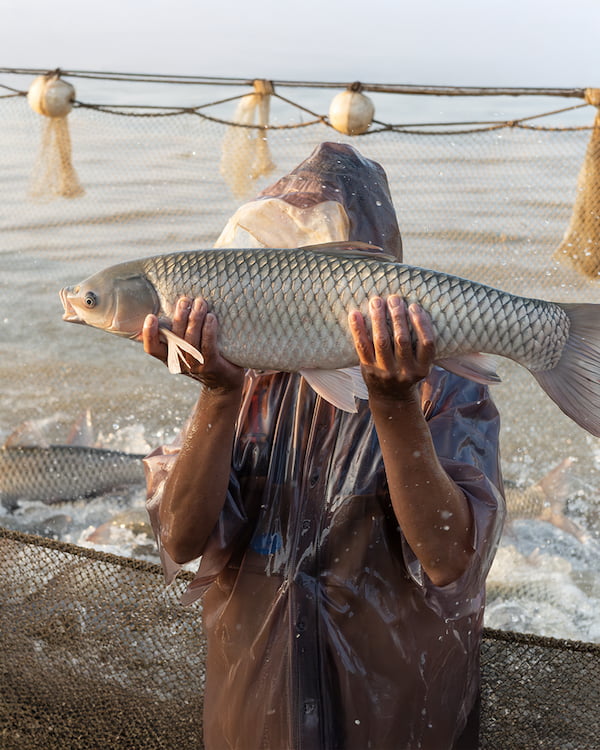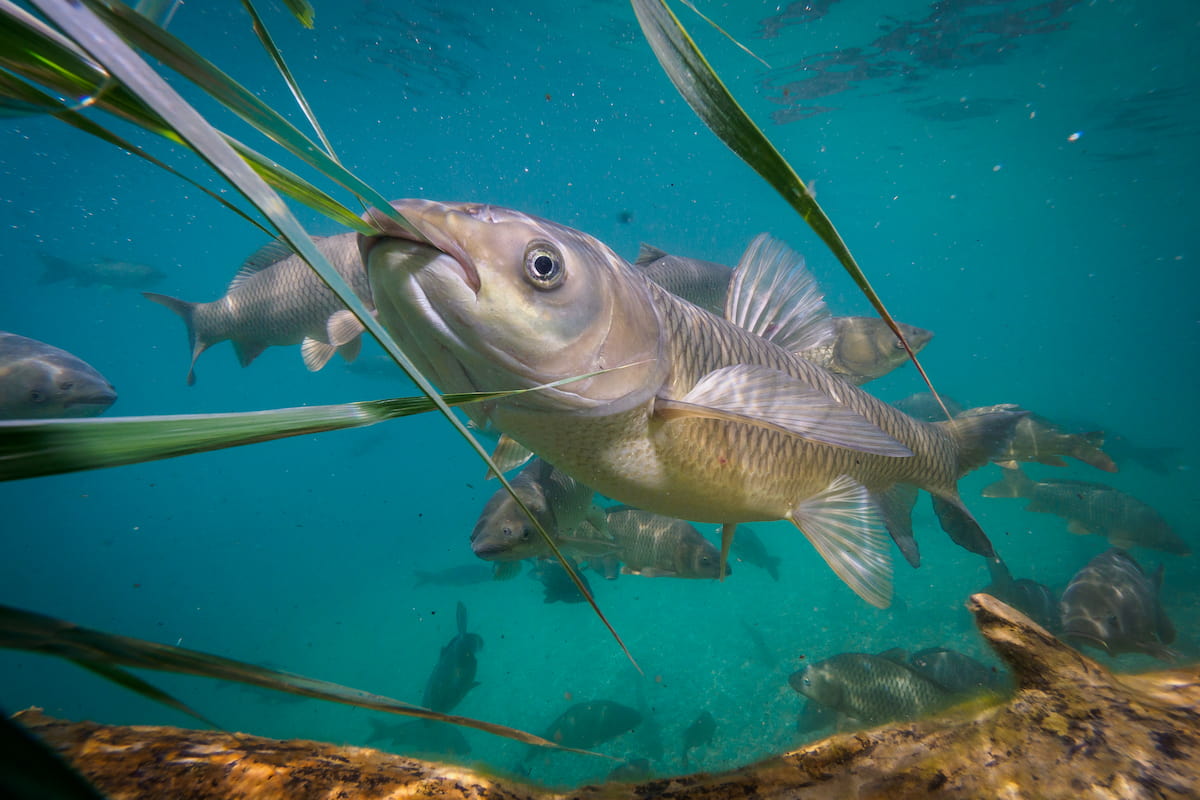If you’re struggling with aquatic weedsin your pond or lake, you may have heard about grass carp as a biological solution. But what do grass carp eat, and are they the right fit for your body of water?

In this expert guide, we’ll cover exactly what grass carp consume, how they compare to other species like the common carp, where they’re legal, how long they live, and how they fit into a broader lake algae controlstrategy. For property managers, HOAs, golf course superintendents, and private landowners, this information is essential — and Pond Guruis here to help.
Grass carp, also known as white amur, are herbivorous fish primarily used to control aquatic vegetation. Their diet consists of soft-bodied, submerged plants. They are highly effective at consuming certain types of aquatic weeds but are not a cure-all for algae issues.
Grass carp prefer to eat:
They may nibble on filamentous algae, but they don’t consume it in significant quantities. However, by eating large amounts of aquatic vegetation that contribute nutrients to the water, grass carp can indirectly help reduce algae bloomsover time.
While they may look similar, grass carpand common carpbehave very differently — especially in the context of pond management.
Grass carp are plant eaters that feed on aquatic vegetation, while common carp are bottom feeders that stir up mud and debris. This behavior by common carp increases water turbidityand can damage aquatic plant life, making water clarity worse over time.
In contrast, grass carp are peaceful and do not root around in the sediment. This makes them a much better fit for pond fish stockingwhen aquatic weed removal and water clarity are priorities.

Adding grass carp for pondsis a natural and long-lasting method of controlling aquatic plant growth. A few fish per acre can drastically reduce problem vegetation within one season, and their effectiveness continues for years.
Key benefits include:
Grass carp offer a sustainable, cost-effective alternative to repeated chemical treatments, especially when managed correctly.
A common question is: how long do grass carp live?
In a healthy pond environment, grass carp live an average of 7 to 10 years, with some living up to 15 or even 20 years. However, their peak weed control activity occurs between ages 2 and 6. As they age, their appetite decreases, which means restocking may be necessary every 5 to 7 years to maintain optimal control.
This long lifespan and sustained feeding behavior make grass carp a smart investment for property managers and pond owners who want consistent, long-term results.

Regulations vary across the United States, and it’s important to ask which states allow grass carpbefore stocking your pond.
Most states permit the use of triploid grass carp, which are genetically sterilized and cannot reproduce. This ensures that grass carp do not spread uncontrollably in natural waterways. However, stocking them typically requires a permit, site inspection, or fencing depending on your local laws.
Some states with restrictions or permit requirements include:
Although they are not primary algae feeders, grass carpcan still play a valuable role in lake algae control. By clearing dense vegetation, they reduce nutrient buildupfrom decomposing plant matter, which can otherwise fuel algae growth.
This indirect approach works best when grass carp are part of a holistic strategy that includes:
Pond Guru specializes in custom weed and algae control plans that integrate grass carp with other tools for maximum effectiveness.

Not every pond is the right fit for grass carp. Ideal conditions include:
If your pond meets these criteria, pond fish stockingwith grass carp may be the most efficient path toward a cleaner, clearer waterbody. But it’s not a one-size-fits-all solution. That’s why Pond Guru conducts on-site evaluations to determine if grass eating carpare appropriate — and what other lake management strategiesmight be needed.
Choosing the right biological control method takes expertise. At Pond Guru, we help clients assess, stock, and manage grass carp for pondslegally and effectively.
We offer:
If you’re struggling with aquatic weeds or want to reduce algae naturally, schedule a consultation with Pond Guru to learn how white amurcan help transform your waterbody.
Grass carp feed primarily on submerged aquatic vegetation like hydrilla, coontail, duckweed, and pondweed. They eat little algae directly but help reduce conditions that support algae growth.
They typically live 7 to 10 years in ponds, with the most active feeding years occurring between ages 2 and 6.
Triploid grass carp are legal in most states but usually require a permit. Check with your fish and wildlife agency or contact Pond Guru for assistance.
Unlike common carp, which disturb sediment and increase turbidity, grass carp feed on plants and improve water clarity without disrupting the pond bottom.
Yes — indirectly. By removing vegetation that decays and releases nutrients, grass carp help reduce algae blooms as part of an integrated pond management plan.